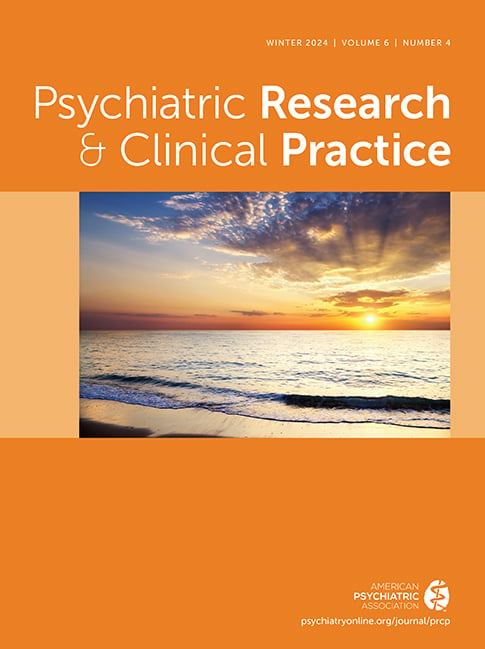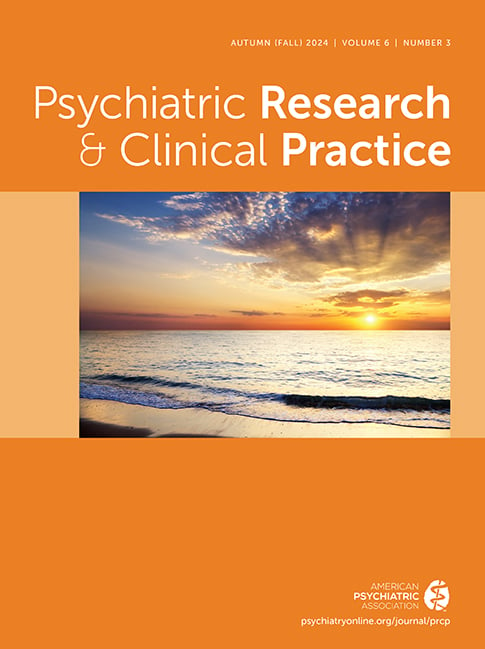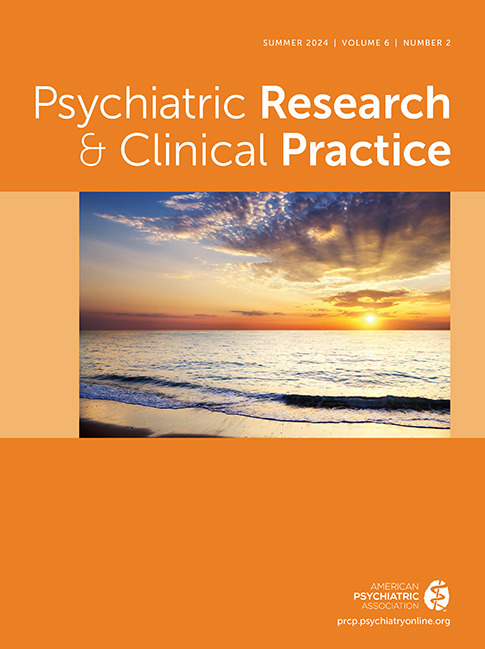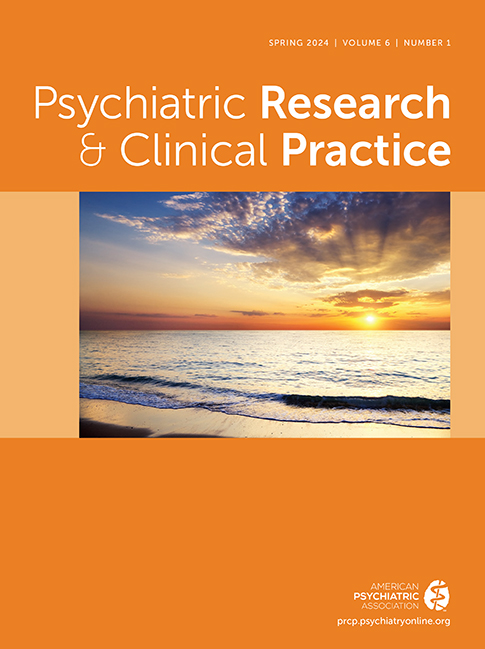Psychiatric Research and Clinical Practice
- Volume 6
- Number 3
- September 2024
ARTICLE
Publication date: 08 April 2024
Pages68–77Objective Psychiatric disorders are associated with impairments in quality of life (QOL) and functioning. What remained to be investigated was the comparison of these constructs across psychiatric disorders in treatment‐seeking adults. It was ...
https://doi.org/10.1176/appi.prcp.20230064Publication date: 02 May 2024
Pages78–86Objective Individuals with a history of suicidality may be especially vulnerable to the adverse impact of COVID‐related stressors, but this vulnerability has not been demonstrated. This study examined the longitudinal effects of suicidality history (...
https://doi.org/10.1176/appi.prcp.20230067Publication date: 30 May 2024
Pages87–93Objective This study describes recency of suicide attempt (SA) and suicidal ideation (SI) at index emergency department (ED) visit and post‐ED‐discharge reattempt among pediatric patients. Methods Secondary analysis from the ED Screen for Teens at Risk ...
https://doi.org/10.1176/appi.prcp.20240006Publication date: 06 June 2024
Pages94–103Objective To combat the heightened risk of opioid overdose death for individuals with criminal justice involvements, enhanced access to Medicaid remains paramount. This study examines the effect of a 2017 policy change in Pennsylvania that allowed for ...
https://doi.org/10.1176/appi.prcp.20230080Publication date: 28 June 2024
Pages104–111Background and Hypothesis Clozapine is an effective yet underutilized treatment for treatment‐resistant schizophrenia spectrum disorders. This study aimed to identify factors affecting clozapine prescribing patterns among patients with treatment‐...
https://doi.org/10.1176/appi.prcp.20240056VIEWPOINT
Publication date: 21 June 2024
Pages112–114The use of the term “treatment resistance” (TR) in psychiatry has blossomed over the last two decades, with 20%–60% of all cases now labeled as such. Remaining effective treatment options, however, can be identified for two‐thirds of these cases. There is ...
https://doi.org/10.1176/appi.prcp.20240073LETTER
Past Issues
View Issues Archive
Vol. 6 | No. 4

Vol. 6 | No. 3

Vol. 6 | No. 2
